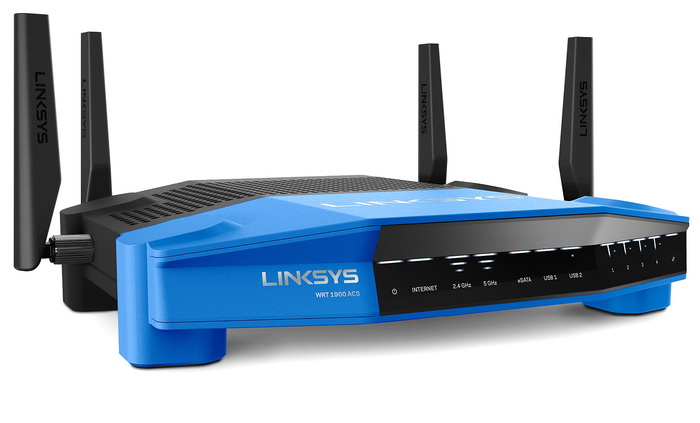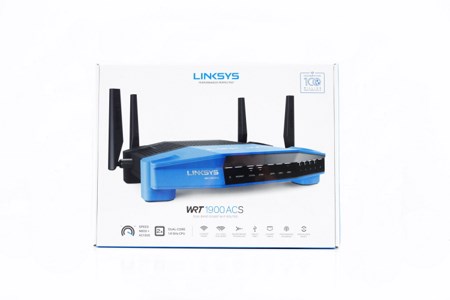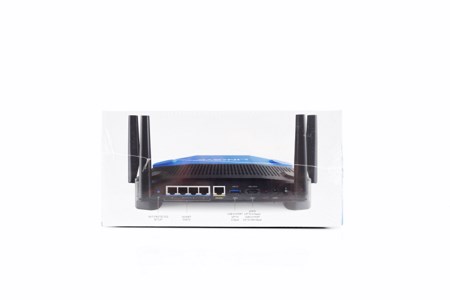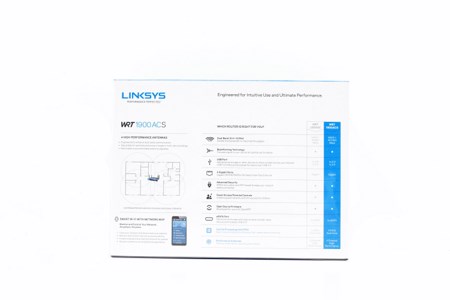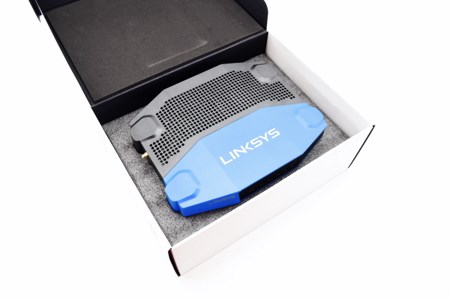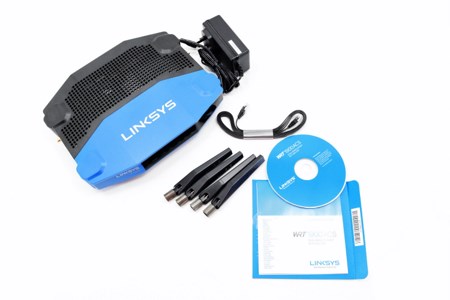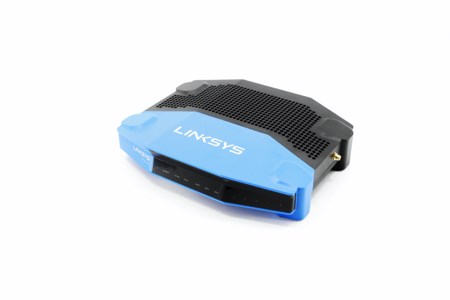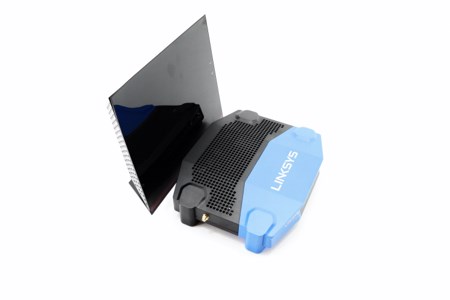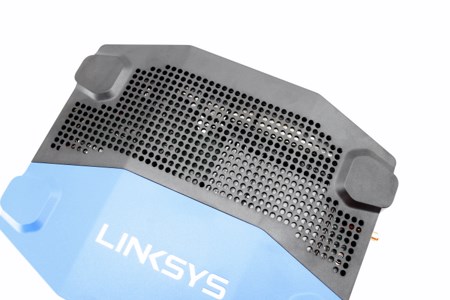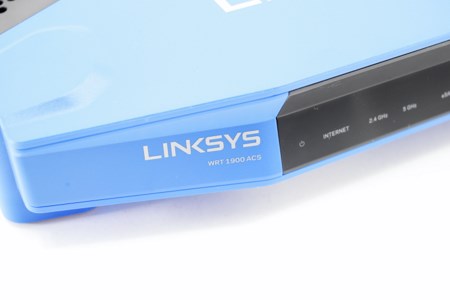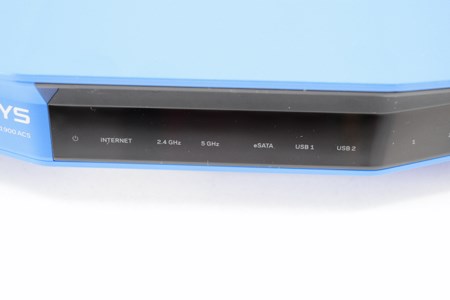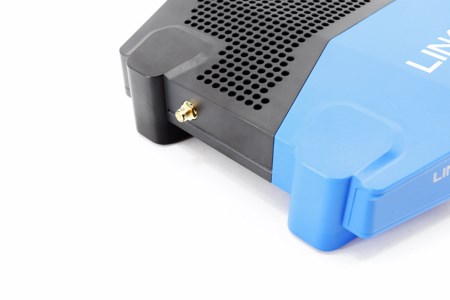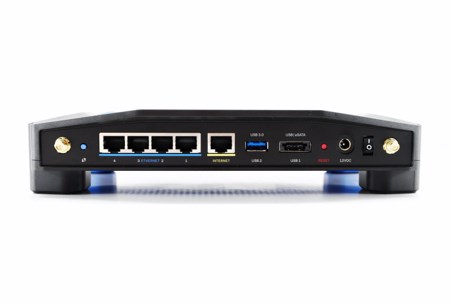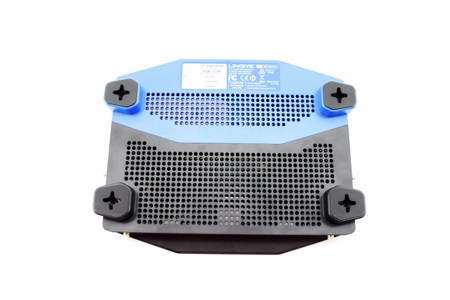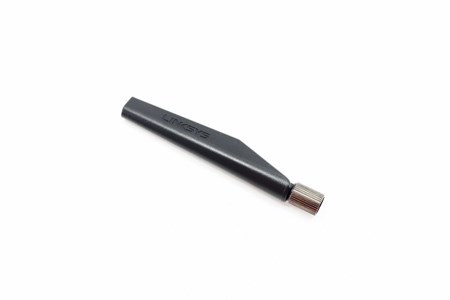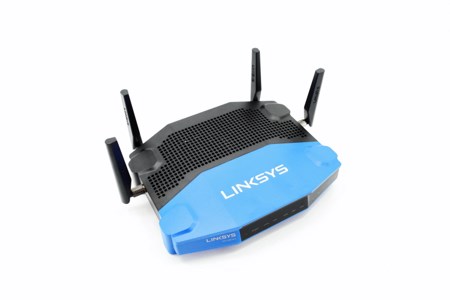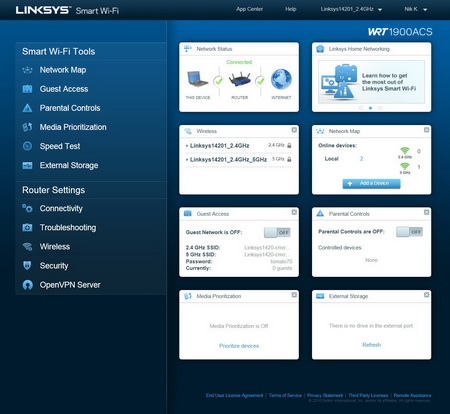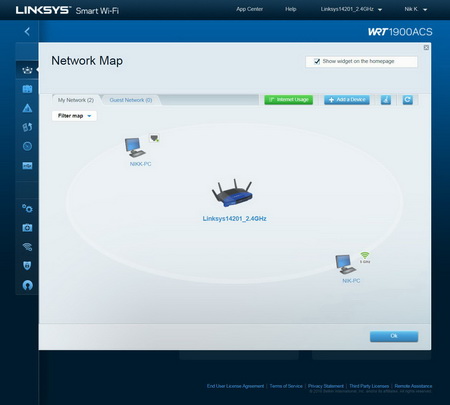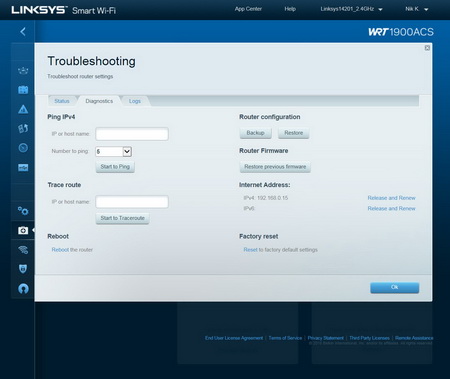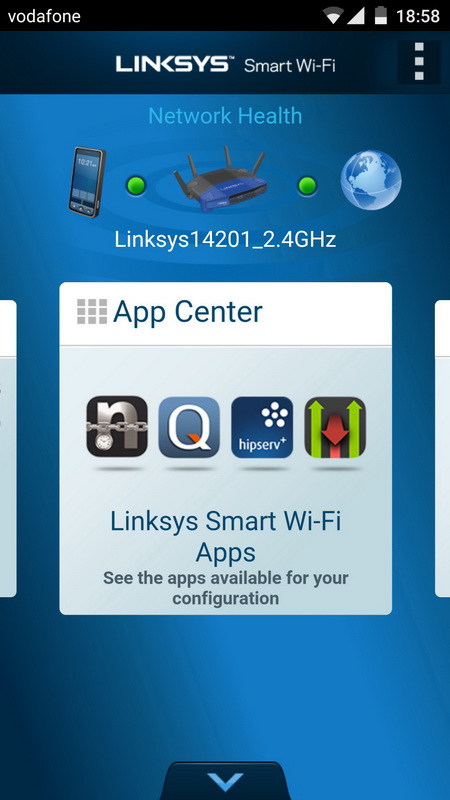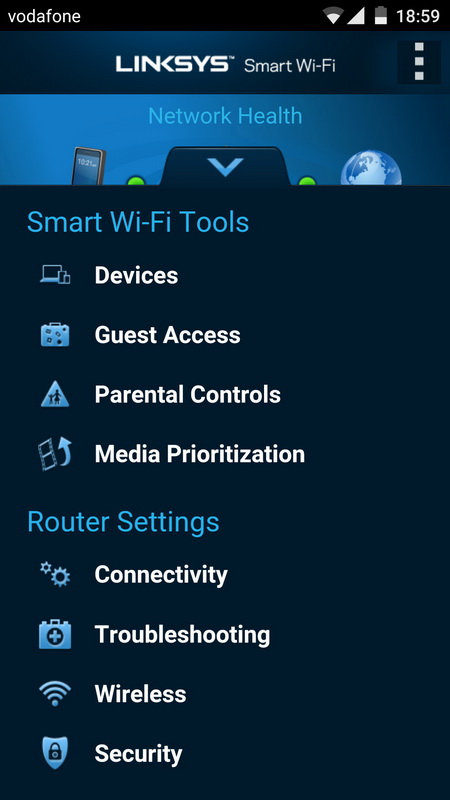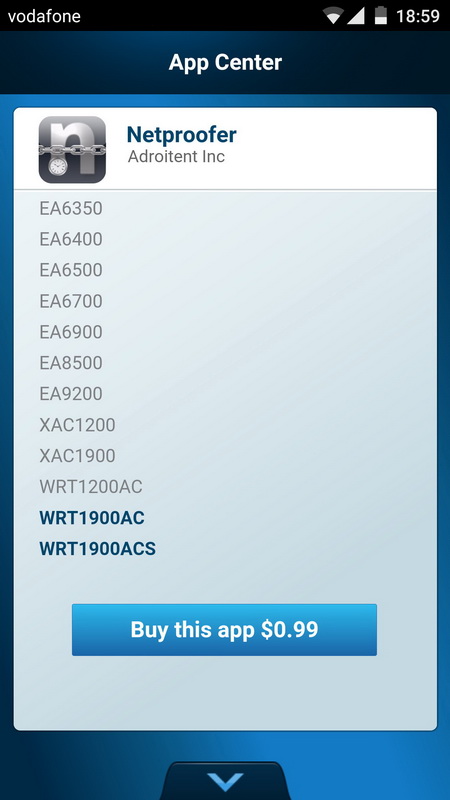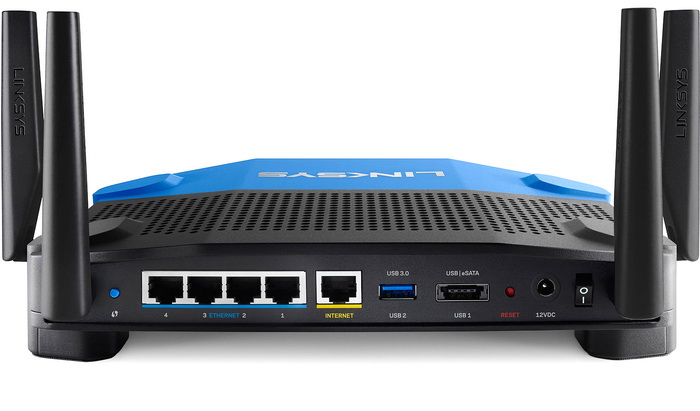INTRODUCTION
Up until a few years ago most people had but one smartphone which they'd use primarily to make calls so even the now "old" Wi-Fi 802.11n networking standard with its maximum data rate of 300Mbit/s (later pushed to 450 and 600Mbit/s) on the 2.4GHz band was more than enough. Today however things have changed so most of us have more than just one smartphone and a tablet not to mention several other devices which also support Wi-Fi connectivity including TV sets, media players, printers, blue-ray players, notebooks, wireless speakers, cameras, security systems, consoles and much more. To support this large number of Wi-Fi compatible devices the industry launched the 802.11ac standard a couple of years ago which basically upped the maximum data rate from 600Mbit/s to 1200Mbit/s on the 5GHz band (1300Mbit/s was also achieved shortly afterwards). Well human "ingenuity" knows no bounds and so several manufacturers decided to add a 2.4GHz right next to the 5GHz one to boost the available data rate to well over 1600Mbit/s (300Mbit/s on the 802.11n 2.4GHz band and 1300Mbit/s on the 802.11ac 5GHz band) while some models have even surpassed 3000Mbit/s with the addition of more than one 2.4GHz and 5GHz bands. Today with us we have the brand new WRT1900ACS Router by Linksys, a high-end model which offers a maximum combined data rate of 1900Mbit/s (concurrent 802.11n & 802.11ac signals).
The Linksys brand has pioneered wireless connectivity since its inception in 1988 with its leading innovation and engineering strategies, and best-in-class technology, design, and customer service. Linksys enables a connected lifestyle for people at home, at work and on the move, and with its award-winning products, simplifies home control, entertainment, security and Internet access through innovative features and a growing application and partner ecosystem. Linksys is part of Belkin International.
As some of you may already know (or figured out by its name and/or looks) he WRT1900ACS is actually the updated version (successor) of the highly-acclaimed and award winning WRT1900AC which we had with us last year and left us with the best possible impressions. So what did Linksys improve on their already excellent router? Well compared to the WRT1900AC which featured a 1.2GHz dual-core ARM CPU with 128MB of flash storage and 256MB of DDR3 RAM the WRT1900ACS is quite more powerful since under its hood it has a 1.6GHz dual-core ARM CPU with 128MB of flash storage and 512MB of DDR3 RAM. Everything else however remains pretty much the same since just like its predecessor the WRT1900ACS features a maximum combined data rate of 1900Mbit/s (1300Mbit/s on the 5GHz band and 600Mbit/s on the 2.4Ghz band), 4 dual-band detachable high-gain antennas (support beamforming), 4 Gigabit Ethernet ports, Gigabit WAN port, eSATA/USB 2.0 port and a USB 3.0 port. With increased CPU speed and more RAM just how much better is the WRT1900ACS compared to its predecessor?
SPECIFICATIONS AND FEATURES

PACKAGING AND CONTENTS
The front of the box has a large picture of the WRT1900ACS right over its main features.
You can take a look at the rear of the WRT1900ACS from the left side of the box.
A detailed specifications list is placed on the right side.
Moving at the rear of the box we see a drawing showcasing the importance of the 4 dual-band high-gain antennas and a comparison table between the WRT1900ACS and the older WRT1200AC.
Packaging is literally perfect with two black foam pieces keeping the router safe during shipping.
Along with the WRT1900ACS the box contains the 4 detachable antennas, wall power adapter, Ethernet cable, software CD and a quick start guide.
THE WRT1900ACS
Measuring 121mm in width, 75mm in length and 26mm in height the 722g heavy WRT1900ACS is virtually identical with its predecessor.
Many of you may wonder how large the WRT1900ACS is compared to other routers so we placed it right next to the D6300 by Netgear.
Once again we see that the largest are of the top is perforated to allow hot air to exit the enclosure.
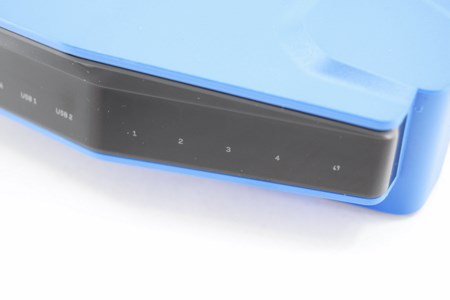
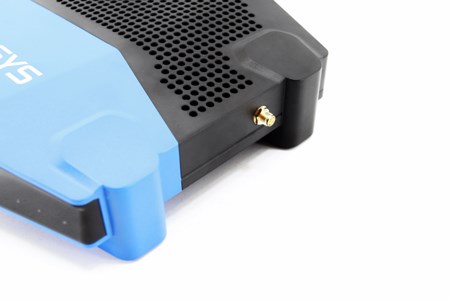
Two extra antenna mounts are placed at the rear along with a WPS button, 4 RJ45 Gigabit Ethernet ports, Gigabit WAN port, USB 3.0 port, eSATA/USB 2.0 port, reset button, DC in and the on/off switch.
The bottom is also perforated and as you can see you can mount the WRT1900ACS vertically as well.
Linksys has used identical high-gain antennas with the WRT1900AC so we pretty much know what to expect in terms of range and performance.
With all 4 antennas installed the WRT1900ACS scores high in looks too.
SMART WI-FI INTERFACE PART 1
Just like its predecessor the current state of the WRT1900ACS is available through the main tab.
A very convenient network map of devices connected to the router (wired and wireless) is also available in the Smart Wi-Fi interface.
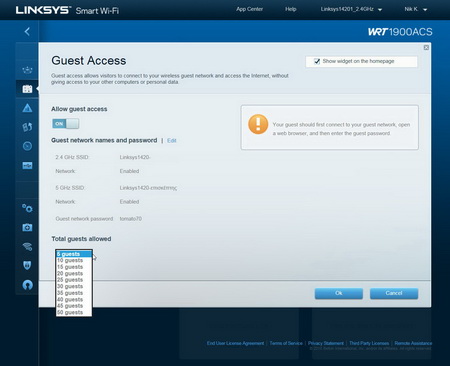
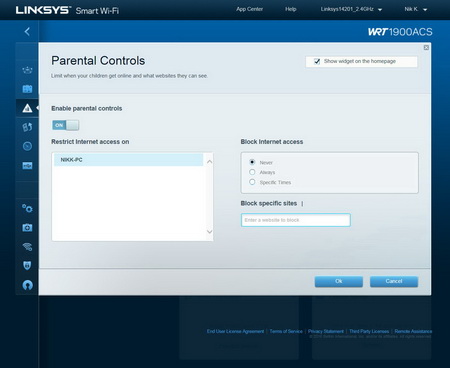
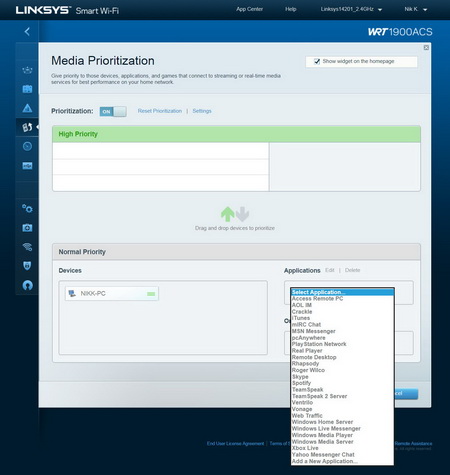
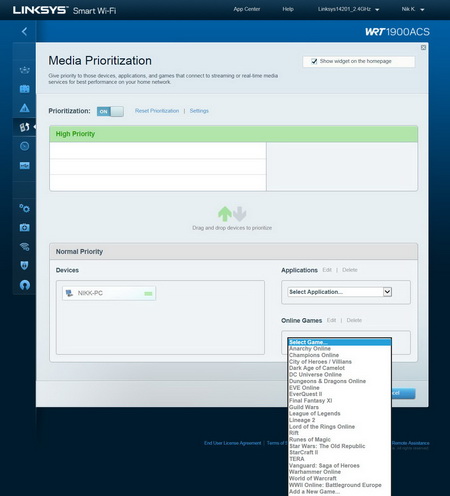
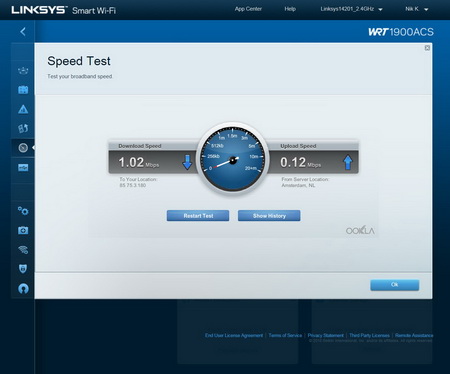
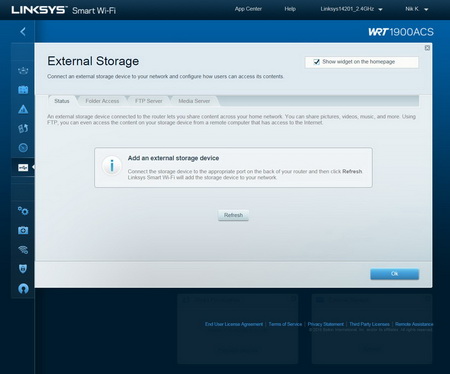
Through here you can also enable/disable the guest access control, enable/disable parental controls, setup media prioritization (there are several software and game presets) perform an internet speed test (not really very reliable since it's the same as the ones we find online) and finally you can check the state of all connected devices via eSATA and USB.
SMART WI-FI INTERFACE PART 2
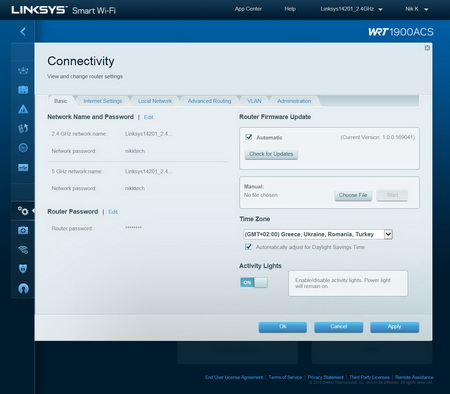
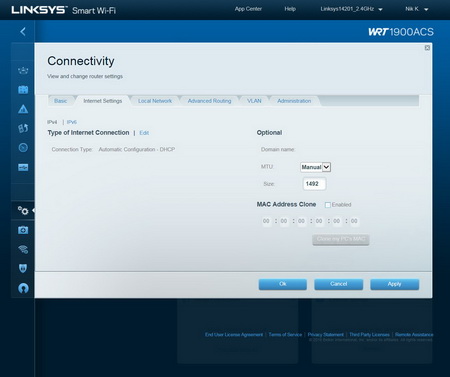
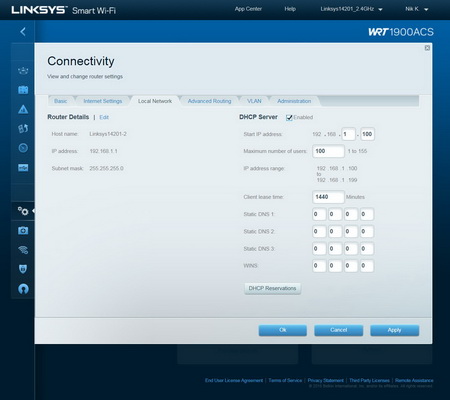
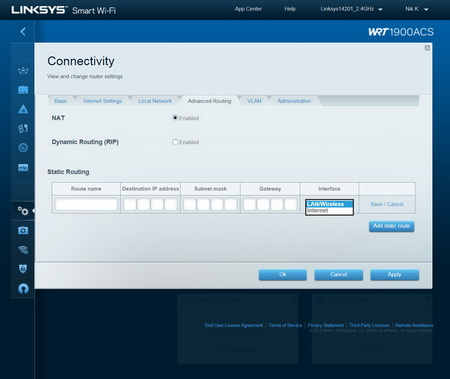
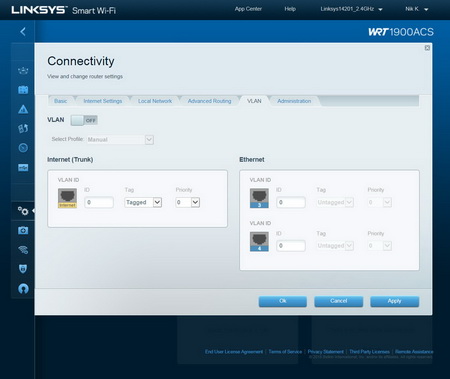
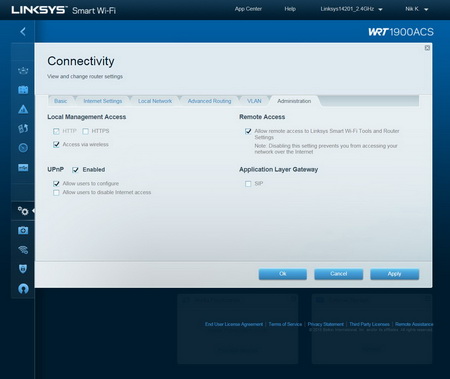
You can also adjust the wireless connectivity options, setup VLAN, enable/disable DHCP and remote access to the router and enable/disable UPNP.
Linksys has placed a troubleshooting tab via which you can check the status of the router, perform diagnostics and read the logs.
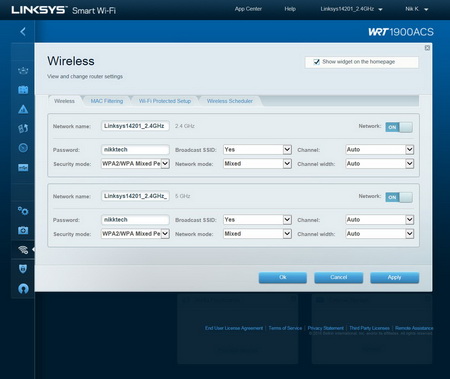
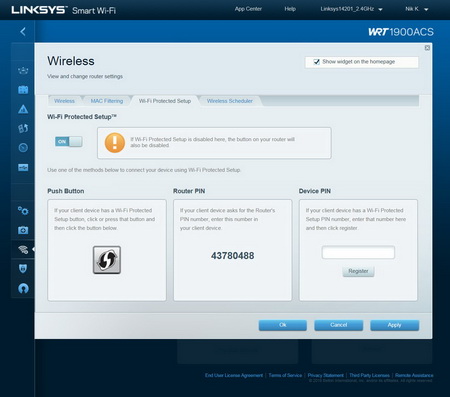
Everything that has to do with wireless connectivity (network names, broadcast ID, passwords, WPS, scheduler) is placed under the wireless tab.
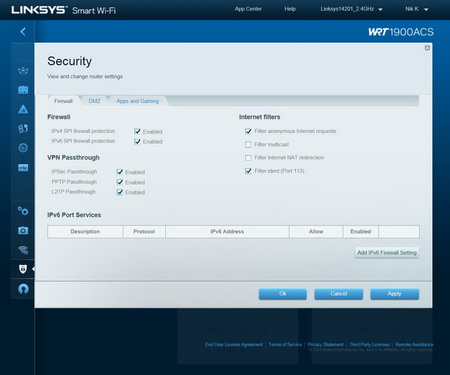
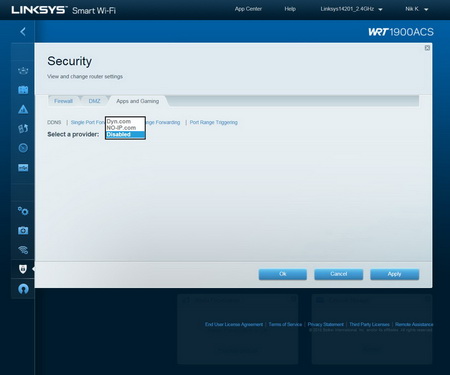
Likewise you can setup the firewall, DMZ, DDNS and port forwarding features from the security tab.
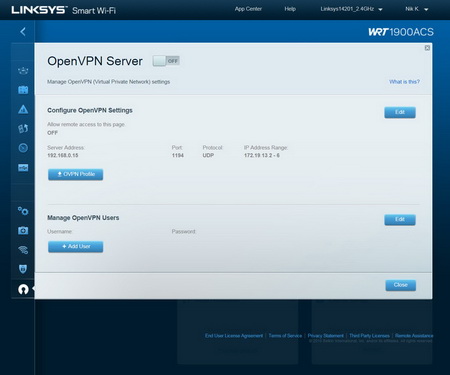
Finally you can enable/disable the OpenVPN (open source virtual private network) feature.
SMART WI-FI ANDROID APP
If you want to access your WRT1900ACS from your smartphone via 3/4G/Wi-Fi and have already linked it to a smart Wi-Fi account you can download and use the Smart Wi-Fi app.
This app gives you control over several settings that have to do with guest access, parental controls, media prioritization, wireless connectivity and security.
The app points you to other compatible apps like Netproofer which unfortunately is not free (not that $0.99 is far from free).
TESTING METHODOLOGY
Since standalone routers can't directly connect to the internet (unless you have a cable connection which we don't) and thus the modem is responsible for internet speeds the only thing that's left is to test and see how much bandwidth they can offer by directly linking two devices with them. So once again we will be using the networking benchmark by Passmark (v.8), the QCheck by Ixia and ATTO 2.47 (since April 2015) to test such devices the same exact way we test Powerline adapters and Modem/Routers. Since we need to test new features and specifications all routers are benchmarked with their highest available wireless standard/band (5GHz in this case). Our systems are placed 15m away from the router with 3 concrete walls between them while each test is repeated a total of 6 times after which the average scores are recorded into our charts. Both systems have Windows 7 Ultimate SP1 installed with all the updates until the 21st of February 2016.
Over the years we’ve also received several requests by some of you to also measure power consumption when testing modem/routers and although differences are not that great between similar models we decided to do so from this review (average power consumption during tests is placed in our charts - we can only provide results for the models we have here and the ones we kept their power consumption in our logs).
TEST RESULTS
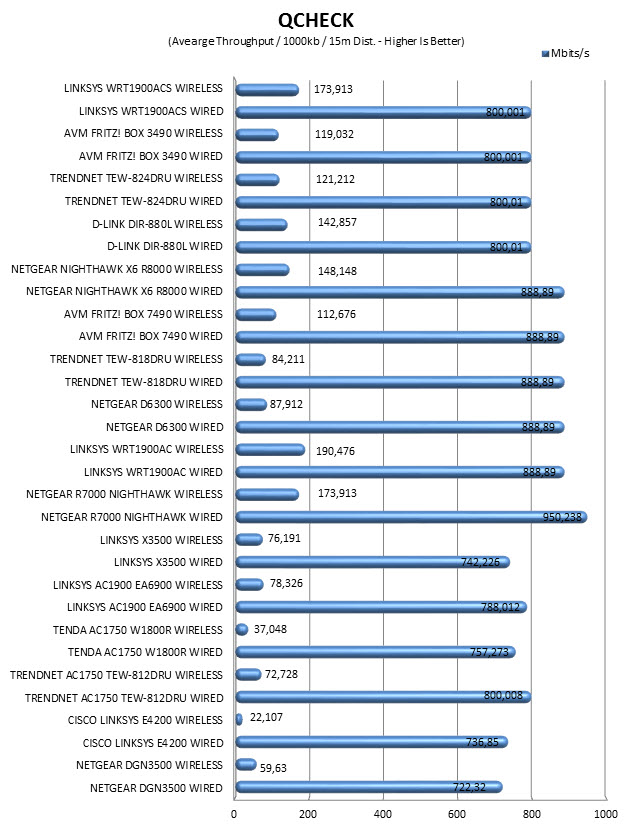
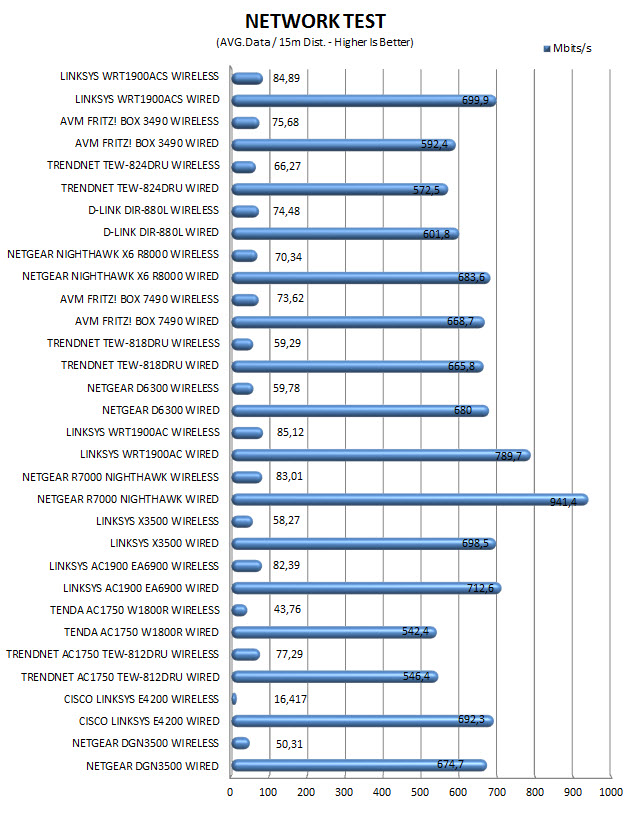


CONCLUSION
The WRT1900AC was a router which we had been waiting for ever since Linksys announced its release several months before it was available anywhere and it was really well worth the wait since it managed to outperform pretty much every router to ever pass from our lab. So you can imagine how curious we were to see just how the new WRT1900ACS with its faster ARM CPU and double amount of RAM would perform. Strangely enough although GUI navigation was far smoother the WRT1900ACS wireless and wired performance was pretty much identical to that of the WRT1900AC. Of course since the WRT1900ACS features a faster dual-core ARM CPU and twice the RAM of its predecessor things would probably be different if we had like 5 or more Wi-Fi enabled devices connected to the WRT1900ACS streaming media and sharing files so do keep that in mind. It was also good to see that although Linksys upgraded both the CPU and RAM of the WRT1900AC in the WRT1900ACS there was virtually no increase in power consumption so potential buyers shouldn’t worry about that either. As for the Smart Wi-Fi interface it remains pretty much the same as the one used in the WRT1900AC and thus it’s not only very easy to navigate but it also offers more settings that even we could ever possibly hope to use.
Much like the WRT1900AC at launch the WRT1900ACS is also not what most people would call affordable since currently it retails for USD222.99 inside the USA (Amazon.com) and for 227Euros inside the EU (Amazon.co.uk). Once again everything comes down to what your needs are so if you do need the extra range and power/performance offered by the 4 high-gain antennas and its specifications the WRT1900ACS is one of the best choices out in the market today. On the other you can always check the previous (and lower-cost) WRT1900AC model which has nothing really to be jealous of the new version and will have no problem covering even the most demanding of users. In the end the WRT1900ACS may not come cheap but it’s a worthy upgrade to an already excellent router and that’s why it gets our Platinum Award.

PROS
- Build Quality
- Design
- Wireless Performance (Among The 3 Fastest In Our Charts)
- AC1900 Technology (Concurrent 802.11n & 802.11ac)
- Features
- 4 High Gain Detachable Antennas
- Smart Web Interface
- Open Source OS
- 4 Gigabit Ethernet Ports
- USB 3.0 Port & USB 2.0/eSATA Port
CONS
- Price (For Some)

 O-Sense
O-Sense





